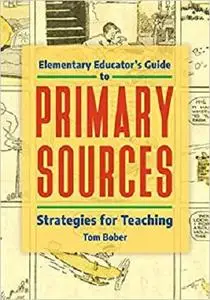Elementary Educator's Guide to Primary Sources: Strategies for Teaching by Tom Bober
English | December 4, 2018 | ISBN: 1440863865 | 184 pages | PDF | 41 Mb
English | December 4, 2018 | ISBN: 1440863865 | 184 pages | PDF | 41 Mb
Focusing on student analysis of primary sources, this book explores several proven analysis strategies to use with students, including methods from the Library of Congress, the Stanford History Education Group, and Harvard's Project Zero.
Many elementary school librarians and teachers want to incorporate primary sources into their lessons but struggle with how to do it. Whether you are starting from the beginning, have used strategies that didn't seem to work, or were underwhelmed by others' suggestions, this book shows you how you can successfully supplement and deepen your students' learning with primary sources.
Focusing on proven strategies for elementary students, the book is divided into four sections, each of which demonstrates the strategies through real-world examples of student work. In the first three parts, it explores the three major considerations for using primary sources, strategies for analyzing primary sources, effectively using primary sources to teach different subject areas, and special considerations for different primary source formats. In the final part, the author shares tips that he has learned after years of bringing primary sources into his elementary school that will ensure success in students' primary source analysis.
- Explains how to identify compelling primary sources by searching online and local resources
- Helps readers to recognize the role primary source analysis can play in student learning across subject areas and grade levels
- Offers readers an understanding of an array of primary source analysis techniques as well as well as ways to modify those techniques in unique situations



